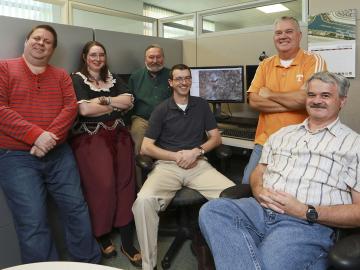Filter News
Area of Research
- (-) Climate and Environmental Systems (2)
- (-) Geographic Information Science and Technology (2)
- Advanced Manufacturing (9)
- Biological Systems (4)
- Biology and Environment (4)
- Biology and Soft Matter (1)
- Building Technologies (3)
- Chemical and Engineering Materials (2)
- Chemistry and Physics at Interfaces (6)
- Clean Energy (101)
- Computational Chemistry (1)
- Computational Engineering (1)
- Computer Science (8)
- Energy Frontier Research Centers (7)
- Functional Materials for Energy (6)
- Fusion Energy (7)
- Isotope Development and Production (1)
- Materials (94)
- Materials Synthesis from Atoms to Systems (5)
- Materials Under Extremes (6)
- National Security (5)
- Neutron Data Analysis and Visualization (2)
- Neutron Science (33)
- Nuclear Science and Technology (17)
- Quantum Condensed Matter (2)
- Quantum information Science (3)
- Reactor Technology (1)
- Supercomputing (51)
- Transportation Systems (3)
News Type
News Topics
Media Contacts

In the vast frozen whiteness of the central Arctic, the Polarstern, a German research vessel, has settled into the ice for a yearlong float.

A detailed study by Oak Ridge National Laboratory estimated how much more—or less—energy United States residents might consume by 2050 relative to predicted shifts in seasonal weather patterns

Bruce Lester has had a lot of jobs: fisherman, horse trainer, “professional stair builder.” He last worked for a real estate company, surveying land using geographic software. “When the bottom fell out of the construction industry and the company downsized, I got laid off,”

Researchers at the Department of Energy’s Oak Ridge National Laboratory have developed a population distribution model that provides unprecedented county-level predictions of where people will live in the U.S. in the coming decades.




